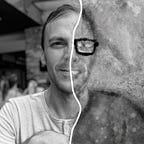Quantum Physics is Merely Another Window into Reality
You are in a room. You are alone, and you are trapped. There is a world out there, but you cannot visit it. Reality is out there, but I am trapped in here, in my room, as you are in yours. The outside is not entirely inaccessible, though — you can view it through various windows in your room. I want to tell you briefly about two windows in your room that allow you to view the same reality but distort it in dramatically different ways — the quantum window and the classical window.
Using this analogy, some might say that quantum physics is the window into the true nature of reality, a glimpse into the hidden beauty of the universe. The quantum window reveals a world that is not as deterministic as we once thought but rather one that is constantly in flux, a realm of probabilities and possibilities. It is a realm where particles can exist in two places at once, where the act of observation can change the outcome of an experiment. It is a realm that defies our classical understanding of the world. But all that is a lie.
The quantum window does not reveal anything — it distorts reality into a vision we can process and communicate with others in presumably similar rooms. The quantum window is a kaleidoscope made of stained glass. It projects symmetry where there is none and presents reality as a paradox. But that is not the true reality. All is not lost, though — some things come through the quantum window with greater clarity than the classical window, so it’s worth looking out of.
The classical window, on the other hand, is frosted. It presents reality filtered through a translucently deceitful lens. It shows us a world that is orderly, predictable, and deterministic, but it is limited by its inability to capture the true complexity of the universe. It is the window that we have been using for centuries, and it has served us well in many areas of science and technology. But it is also a window that seductively blinds us to the true nature of reality.
Neither window has an uncensored view of reality. Both windows have their strengths and weaknesses, and they offer different perspectives on the same reality. The quantum window allows us to explore some extreme scales of the universe, while the classical window provides a simpler and more intuitive understanding of the world at our own scale. Together, they provide a more complete picture of reality, but neither one can fully capture the true complexity of the universe — perhaps no window can.
The window analogy perfectly captures the idea that there is only one reality. There’s no quantum world and classical world. There’s no line that divides them nor a gray area to explore. There is only one reality and the distorted views we have of it. The important lesson is that our perception of reality is a reflection of the windows we use to view it, and what we see in the world is a consequence of how we construct those windows. But using analogies like this is also dangerous. One must be careful not to believe they can be transcended. In this case, the rules of the game enforce your entrapment. You cannot escape, and imagining you can destroys the utility of the analogy. You may construct new windows into reality, but never a door.
